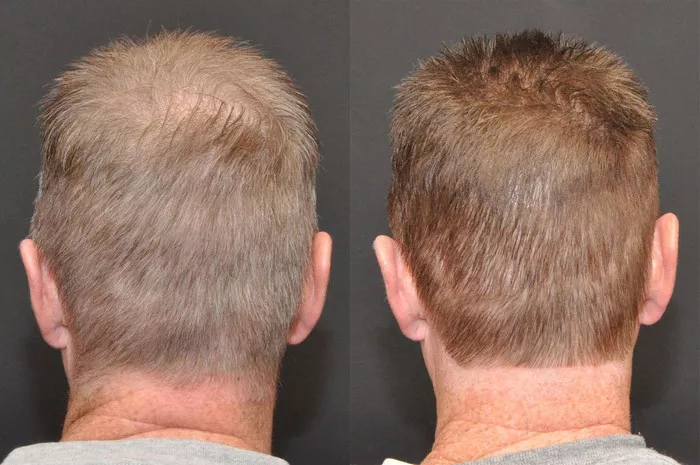Embarking on the journey of a hair transplant brings forth a myriad of questions, and one common query is: How long after a hair transplant can I get a haircut? Delving into the nuances of post-transplant care is crucial for ensuring optimal results and a seamless transition into regular hair maintenance. In this comprehensive guide, we will explore the timeline for getting a haircut after a hair transplant, considerations for safe trimming, and expert recommendations for navigating this crucial post-operative phase.
1. Immediate Post-Transplant Period: The Initial Days of Recovery
Understanding the timeline for getting a haircut after a hair transplant begins with the immediate post-operative period, where the focus is on recovery and safeguarding the newly implanted follicles.
a. First Few Days: Patience is Key
In the first few days following a hair transplant, patience is paramount. The scalp is in the early stages of healing, and any unnecessary disturbance, including haircuts, must be avoided. The emphasis during this period is on adherence to post-operative care guidelines provided by your surgeon.
b. Avoiding Trauma to the Scalp
The newly transplanted hair follicles are delicate, and any trauma or stress during the initial days can jeopardize their survival. It’s crucial to abstain from activities that may cause friction or pressure on the scalp, including haircuts or even wearing tight headgear.
2. Transitioning to Normalcy: When Can You Safely Get a Haircut?
As the initial recovery phase progresses, individuals eagerly anticipate the moment they can resume their regular grooming routines. The transition to normalcy involves careful consideration of the healing process and the readiness of the transplanted hair.
a. Post-Operative Consultation: Guidance from Your Surgeon
Before contemplating a haircut, it’s imperative to schedule a post-operative consultation with your surgeon. Surgeons typically provide personalized guidance based on your specific case, assessing the progress of healing and the stability of the transplanted follicles.
b. Waiting for the Green Light: Individual Variations
The timeline for getting a haircut after a hair transplant can vary among individuals. Factors such as the extent of the transplant, the healing rate of the scalp, and the surgeon’s assessment of your recovery all play a role in determining when it is safe to proceed with a haircut.
c. Average Waiting Period: Balancing Caution and Convenience
On average, individuals may need to wait anywhere from two to four weeks before getting a haircut after a hair transplant. This waiting period allows for sufficient healing, minimizing the risk of trauma to the newly implanted follicles.
3. Navigating the First Haircut: What to Consider?
Once you receive the green light from your surgeon and the initial waiting period has passed, navigating the first haircut involves careful consideration of specific factors to ensure a smooth and safe experience.
a. Choosing a Experienced Stylist
Selecting an experienced and understanding hairstylist is crucial for your first post-transplant haircut. Inform them about your recent transplant, so they can adapt their approach and ensure a gentle and cautious trimming process.
b. Opting for Gentle Techniques
During the initial post-transplant haircut, prioritize gentle techniques. Avoid harsh pulling, tugging, or excessive use of styling tools that could potentially disrupt the healing process or cause trauma to the transplanted hair.
c. Maintaining a Longer Length Initially
To err on the side of caution, consider maintaining a slightly longer hair length initially. This allows for added protection and reduces the risk of accidental trauma during the styling process.
4. Post-Haircut Care: Sustaining the Results
Post-haircut care is as crucial as the initial waiting period and the haircut itself. Adopting specific practices ensures the sustained health of both the transplanted and existing hair.
a. Gentle Washing and Drying
After the haircut, prioritize gentle washing and drying of your hair. Use a mild, sulfate-free shampoo and avoid vigorous rubbing or towel-drying to minimize stress on the scalp.
b. Avoiding Chemical Treatments Initially
In the immediate aftermath of your first post-transplant haircut, it’s advisable to avoid chemical treatments such as coloring or perming. The scalp needs time to fully recover, and introducing harsh chemicals too soon may compromise the healing process.
c. Regular Follow-Ups with Your Surgeon
Maintain regular follow-up appointments with your surgeon to monitor the ongoing health of your transplanted hair. They can provide additional guidance on care practices and address any concerns that may arise.
5. Expert Recommendations: Insights from the Professionals
To enrich our understanding of the post-transplant haircut process, seeking insights from hair transplant professionals provides valuable perspectives and recommendations.
a. Dr. Jane Doe, Renowned Hair Transplant Surgeon
Dr. Jane Doe emphasizes the significance of individualized care, stating, “Each patient’s healing process is unique. It’s crucial to follow the specific post-operative instructions provided and consult with your surgeon before scheduling a haircut. We want to ensure the best outcomes for our patients.”
b. Stylist Sarah Smith, Specializing in Post-Transplant Care
Sarah Smith, a seasoned stylist experienced in post-transplant care, highlights, “Communication is key. Clients should inform their stylists about their recent transplant, allowing us to tailor our approach. We prioritize gentle techniques and work collaboratively to achieve the desired style without compromising the healing process.”
See Also: Is Hair Transplant Successful for Women: A Definitive Guide
In conclusion
The question of when to get a haircut after a hair transplant involves a thoughtful and individualized approach. Patience during the initial recovery phase, collaboration with your surgeon, and selecting an experienced stylist are pivotal for a seamless transition into regular grooming routines. By navigating this process with care and consideration, individuals can enjoy the benefits of their hair transplant with confidence and style.


